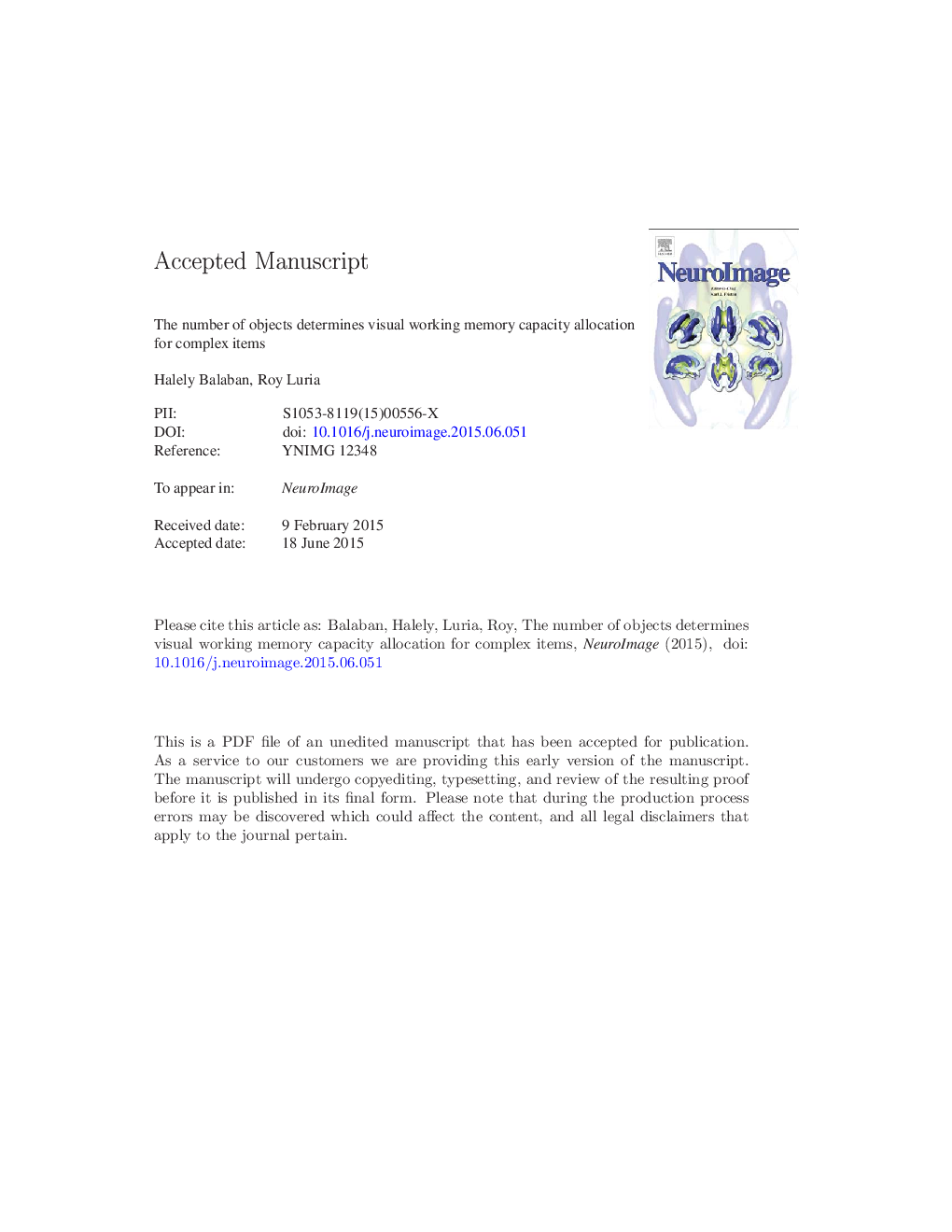| کد مقاله | کد نشریه | سال انتشار | مقاله انگلیسی | نسخه تمام متن |
|---|---|---|---|---|
| 6024802 | 1580888 | 2015 | 40 صفحه PDF | دانلود رایگان |
عنوان انگلیسی مقاله ISI
The number of objects determines visual working memory capacity allocation for complex items
ترجمه فارسی عنوان
تعداد اشیاء تعیین می کند که ظرفیت حافظه کاری را برای موارد پیچیده تعیین می کند
دانلود مقاله + سفارش ترجمه
دانلود مقاله ISI انگلیسی
رایگان برای ایرانیان
کلمات کلیدی
موضوعات مرتبط
علوم زیستی و بیوفناوری
علم عصب شناسی
علوم اعصاب شناختی
چکیده انگلیسی
The goal of the present study was to examine whether visual working memory (WM) capacity allocation is determined solely by complexity, with the number of objects being redundant, as suggested by flexible resource models. Participants performed the change detection task with random polygons as stimuli, while we monitored the contralateral delay activity (CDA), an electrophysiological marker whose amplitude rises as WM load increases. In Experiment 1, we compared the WM maintenance of one whole polygon to a single half of the polygon, equating the number of items but varying the complexity level. Additionally, we compared the whole polygon to two halves of a polygon, thus roughly equating perceptual complexity but manipulating the number of items. The results suggested that only the number of objects determined WM capacity allocation: the CDA was identical when comparing one whole polygon to one polygon half, even though these conditions differed in complexity. Furthermore, the CDA amplitude was lower in the whole polygon condition relative to the two halves condition, even though both contained roughly the same amount of information. Experiment 2 extended these results by showing that two polygon halves that moved separately but then met and moved together were gradually integrated to consume similar WM capacity as one polygon half. Additionally, in both experiments we found an object benefit in accuracy, corroborating the important role of objects in WM. Our results demonstrate that WM capacity allocation cannot be explained by complexity alone. Instead, it is highly sensitive to objecthood, as suggested by discrete slot models.
ناشر
Database: Elsevier - ScienceDirect (ساینس دایرکت)
Journal: NeuroImage - Volume 119, 1 October 2015, Pages 54-62
Journal: NeuroImage - Volume 119, 1 October 2015, Pages 54-62
نویسندگان
Halely Balaban, Roy Luria,
